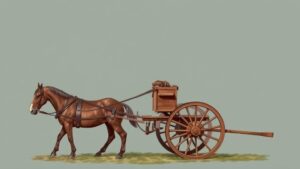Forgotten Community Forges: Exploring Local Metalworking Relic Sites
Forgotten Community Forges: Exploring Local Metalworking Relic Sites
The history of metalworking is a key aspect of human industrial development, seamlessly interwoven with the evolution of communities and societies. The remnants of local forges serve as historical markers, narrating stories of craftsmanship, community reliance, and technological progress. This article delves into the significance of abandoned metalworking relic sites, examining their historical contexts, cultural implications, and potential for contemporary communities.
The Historical Context of Community Forges
Community forges were integral to urban and rural settlements throughout history. Dating back to the Bronze Age, with evidence found in sites like Mycenae (circa 1600-1100 BCE), these locations were pivotal in the production of tools, weapons, and decorative objects. By the Middle Ages, around the 12th century, blacksmithing had become a localized craft, often regarded as one of the essential trades in a community.
For example, in the 19th century, Pennsylvania’s Iron Towns, such as those located in Cambria County, played a crucial role in supplying iron for the burgeoning industrial market, establishing a tradition of metalworking through community-scale forges. The rise of local industries created jobs and fostered economic sustainability but ultimately led to the decline of these businesses with the advent of modern forging techniques and factory systems.
Cultural and Economic Implications of Forgotten Forges
As we explore forgotten community forges, it becomes crucial to consider their cultural and economic implications. sites are often reflective of the socio-economic conditions in which they operated. For example, the decline of community forges in the early 20th century often mirrored the deterioration of local economies, primarily due to industrial consolidation and globalization.
- The loss of traditional skills: With the advent of industrial manufacturing, many local crafts, including blacksmithing, diminished dramatically.
- The importance of cultural heritage: Preserving the remnants of these sites fosters local identity and continuity among communities.
Also, many former metalworking sites have been repurposed into cultural centers or museums, fostering innovative community engagement and education on historical craftsmanship. The Forge Museum in Lawrence, Massachusetts, established in 1999, highlights this resurgence of interest.
Case Studies: Notable Forgotten Forges
Numerous examples around the globe illustrate the historical significance and potential of these forgotten forges:
- Blacksmith Shop in Kingston, New York: Established circa 1830, this site showcases the blacksmithing trades evolution, contributing to local economy and community identity.
- Old World Wisconsin: This living history museum preserves the craftsmanship of the 19th-century American immigrants and their metalworking techniques.
These case studies emphasize how local forges functioned not only as hubs of production but also as social spaces where community ties were strengthened through shared labor and trade.
Preservation Efforts and Community Involvement
As interest in heritage tourism grows, many communities recognize the need to preserve their historical forges as vital cultural resources. Organizations like the Association for the Preservation of Virginia Antiquities advocate for the protection and restoration of such sites, emphasizing their educational value.
Community involvement is essential in these preservation efforts. Engaging local residents through workshops, volunteer days, and educational programs can create a sense of ownership and encourage the transmission of traditional skills to future generations.
The Role of Technology and Modern Blacksmithing
Interestingly, the resurgence of modern blacksmithing in the 21st century has revitalized interest in these historical sites. As consumers become increasingly fascinated with handcrafted goods, local forges that have been revitalized or re-established can serve not only as cultural landmarks but also as functional spaces for artisans.
For example, many contemporary blacksmiths utilize both traditional techniques and modern technology, an approach that can be seen in hybrid workshops that blend artisan skills with up-to-date forging practices.
Conclusion and Actionable Takeaways
The exploration of forgotten community forges reveals a wealth of insights into our industrial past and potential future. Not only do these relics serve to align community identity with historical craftsmanship, but they also highlight the critical need for preservation and educational engagement.
Communities interested in revitalizing their local forges should consider the following actionable steps:
- Conduct a historical survey to locate and document existing forge sites.
- Engage local stakeholders in dialogue about preserving and repurposing these spaces.
- Develop educational programs and workshops to revive interest in blacksmithing and metalworking.
Ultimately, the forgotten community forges stand as testaments to human ingenuity and resilience, inviting renewed appreciation and stewardship from modern societies.



